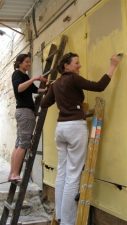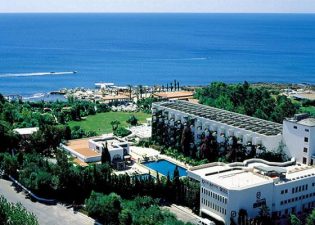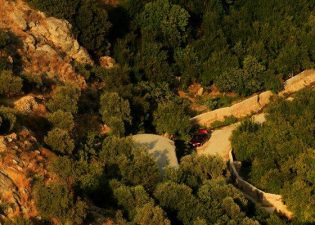 What’s a beach without a shoreline, or a dune perch that overlooks a horizon of…more sand? According to the World Tourism Organization, it’s the newest frontier in eco-tourism – welcome news for the Middle East.
What’s a beach without a shoreline, or a dune perch that overlooks a horizon of…more sand? According to the World Tourism Organization, it’s the newest frontier in eco-tourism – welcome news for the Middle East.
Deserts hold huge potential when it comes to environmental tourism. For Saudi Arabia, largely covered by desert, the possibilities soar. The Saudi Commission for Tourism and Antiquities (SCTA) is looking to transform Saudi deserts into cash machines by attracting adventurous people with a love for exotic nature and extreme sport.
Newfangled activities such as dune-riding and sand-surfing capitalize on alternative “powder” surfaces.
There are camel and horse races to observe or participate in. Looking for a trip with less testosterone? Try camping under tranquil nighttime skies unfettered by light pollution; hike and observe exotic animals and plant life in virgin oasis settings.
Mubarak Al-Salamah, head of the SCTA in Hail, explained the importance of kingdom efforts to protect the environment. The SCTA encourages private investment in wildlife parks and cultural festivals such as the Hail Desert Life Festival.
“There needs to be support for restoration of historical landmarks and handicrafts that are region-specific, building and expanding current walking trails, and tour operators that plan and organize tourism trips,” he told the Saudi Gazette, adding, “All parties should take into consideration the protection and preservation of the delicate desert environment to ensure it continues to exist for years to come.”
Desert tourism is especially appealing to foreign tourists who find the desert climate in stark contrast to home travel options. Saudi deserts are full of historical landmarks (Al-Hijr archaeological site and At-Turaif District in ad-Dir’iyah are UNESCO World Heritage sites) which reveal much about the waves of occupation that swept across the region.



“I have complete confidence in the success of this type of tourism if the basics are provided such as functional restrooms and campsites. Many Gulf countries have already implemented and succeeded in organizing family desert trips,” Ali Al-Eesa, a desert enthusiast, told the Saudi Gazette.
Jaffar Mohammed Sultan, a desert safari organizer in Al-Ahsa, added, “The desert’s most attractive feature is its two equally beautiful personalities — one in the morning and the other at night, which eliminates any feeling of boredom or redundancy that tourists might feel elsewhere. These features can attract tourists of different styles and tastes.”
Desert tourism would also creating seasonal jobs for local youth. But the downside in this part of the world where environmental legislation is largely open to interpretation (and only notionally enforced) is that uncontrolled development (and the tourism it invites) will jeopardize native plant and animal habitat, and damage fragile archaeology, killing the golden touristic goose before it’s fully hatched.




2 thoughts on “Dune skiing in Saudi Arabia”
Comments are closed.